Thinking about your next expedition, China’s capital city, Beijing, boasts history and modernism in equal parts. A visit to the Great Wall, the Forbidden City, and the colorful local environment makes it one of the busiest metropolises in the world, and this is just a portion of what you can experience. This article concerns the most adjustable and budget-friendly tours offered for Beijing 2025. Whether you are a solo traveler, a family with children, or a group of friends, these packages aspire to meet and enhance varied expectations while offering comfort and economy. With these packages, I am sure you all will be able to explore this breathtaking city, one of the world’s numerous marvels.
What Are the Most Popular Beijing Tour Packages?
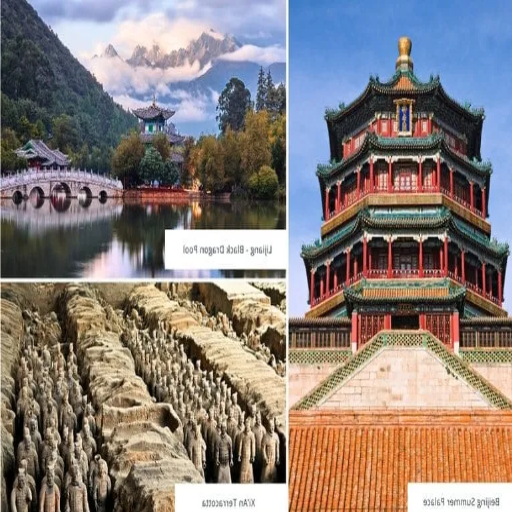
Exploring the Great Wall of China
One of the symbols of the People’s Republic of China is the Great Wall, which was built in the 7th century BC. If you visit China, Beijing is the perfect place to appreciate the best-preserved sections. Tourists take packages to see notable locations, such as Mutianyu, which is not quite as claustrophobic as Badaling but is also more charming. Badaling is quite popular with tourists due to its easy reach.
Mutianyu Section
Features: Restored watchtowers and breathtaking mountainous landscapes.
Accessibility: Has a cable car and a fun toboggan to get down.
Ideal for Families and travelers looking for a slow-paced experience.
Badaling Section
Features: Historical structures and impressive wide walkways.
Accessibility: Easily reachable from Beijing and is suitable for tourists with physical challenges.
Ideal for: First-time tourists and big tour groups.
Both packages include a round-trip journey, a personal, experienced guide, and the possibility of meeting other interests during the tour, which is an option in case other stops suit the people’s preferences. Whether you are interested in culture or want to explore China slowly, the most important site to visit is the Great Wall while in Beijing.
Must-See Sites: Forbidden City and Tiananmen Square
Forbidden City: As one of the most notable sights in Beijing, The Forbidden City, also called the Palace Museum, is a UNESCO World Heritage Site. It covers an area of 180 acres and housed 24 emperors of the Ming and Qing Dynasties. Some features are its 980 remaining buildings, sophisticated Chinese architectural details, and symmetrical layout. The primary features which tourists should set aside 2 to 3 hours for are the Hall of Supreme Harmony and The Imperial Garden. Advanced tip: To make the most of your visit, consider coming earlier to avoid long lines and costs and purchasing your tickets ahead of time since there is a daily cap on the number of visitors.
Tiananmen Square: One of the largest squares in the world at 109 acres, Tiananmen Square, located to the South of the Forbidden City, acts as a national symbol of China, showcasing the modern history of the country along with the national pride associated with it. Important locations in the eastern part of the square are the Monument to the People’s Heroes, Mao Zedong’s Mausoleum, and the National Museum of China, all of which serve as points of interest for tourists. The square has also become a popular sight for the sunrise flag-raising ceremony China is known for; for this, visitors must visit the site well in advance to catch the exact timed flag ceremony. Visitors should be well prepared for 1 to 2-hour spend limits to grasp the full importance and connect the square’s general history and surrounding landmarks.
Experience the Temple of Heaven and Summer Palace
In the south of Beijing lies The Temple of Heaven, which has impressive Ming and Qing Dynastyheon architecture and is listed as a UNESCO World Heritage Site. Emperors traditionally used the area of 2,700,000 square meters for praying ceremonies, serving as the temple’s annual harvest. Noteworthy features are the Hall of Prayer for Good Harvests, a circular structure with triple eaves, and the Echo Wall, famous for its unique sound reflection. On average, tourists intent on seeing the temple set aside 1-2 hours.
To the northwest of Beijing lies The Summer Palace, which has an area of 290 hectares, 75 percent of which is water, making the Palace a retreat during the hot summer months. Along with its remarkable structures, including the Long Corridor and the Marble Boat, the palace prides itself on its astonishing nature – Longevity Hill and Kunming Lake. The Summer Palace is an archetype of Chinese imperial garden design, with welcoming views that freeze you in awe. However, with the expansive grounds, prepare a good pair of walking shoes and at least 3 hours to explore the terrain fully. The Summer Palace and Temple complement one another in showing the diversity of China’s culture alongside its architectural elegance.
How to Choose the Best China Tour Packages Including Beijing?
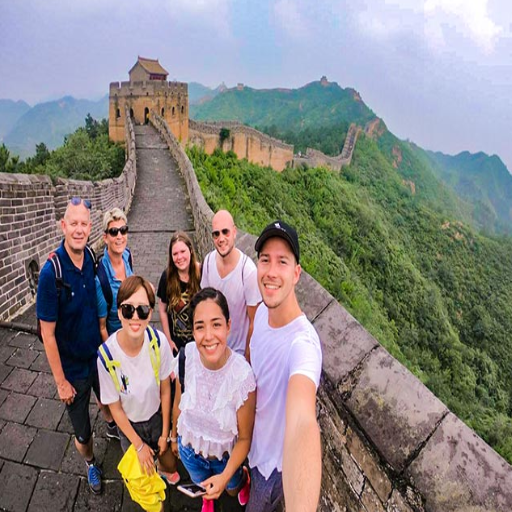
Understanding Your Itinerary Needs
To create a suitable tour package, consider detailing the fundamental aspects of traveling to China and include information that requires personal input. Outline as shown below:
Travel Duration: Identify the available days for travel. For instance, spending 7-10 days on a tour allows you to visit Beijing, Shanghai, and Xi’an. Additional destinations like Chengdu or Guilin can also be included for longer trips.
Interests and Priorities: If you are a cultural lover, prioritizing historic features like the Forbidden City or the Terracotta Warriors is necessary. Nature lovers would be focused more on areas like Zhangjiajie and the Li River.
Group Size and Travel Style: Individual or small group tours have to be chosen. While private tours grant the utmost flexibility, group tours are less expensive and have a defined structure.
Season and Weather: Check what time of the year is the best for different areas to travel to. Spring (April to May) and autumn (September to October) are preferable for most regions because of the moderate weather.
Budget Considerations: A budget estimate is needed, considering lodging, transportation, food, and entry tickets; use high-speed trains straight to the city instead of flying and save on costs.
Answering these questions will put you on the right track while picking a package that complements your preferences. It ensures you get the perfect experience while enjoying the entire trip.
Deciding Between Small Group and Private Tours
Your choice of small group or private tours will depend on your preferences, traveling patterns, and other priorities. Below are the noteworthy features to assess:
Personalization:
Small Group Tours: Have set itineraries with little flexibility in terms of customization. Compatibility suits a traveler who likes to be given a set itinerary to work with and prefers a particular structure within which to operate.
Private Tours Offer flexibility regarding interests, destinations, activities, and schedules. They are best suited to individuals or families wanting complete custom solutions.
Cost:
Small Group Tours: These are less expensive as a cost is incurred by sharing each participant’s costs, making them suitable for cost-friendly travel.
Private Tours: Accommodating personalized services is more costly because every service is tailored exclusively but invites unabated, justifying if privacy and customization are the primary enticing features.
Social Interaction:
Small Group Tours Are energetic and offer a chance to interact with fellow travelers; hence, they are recommended for solo travelers or travelers looking to make new friends.
Private Tours: Such is more friendly to a particular group and favors families, friends, and couples who prefer privacy and exceptionally intimate experience.
Pace and Comfort:
Small Group Tours Feature a fixed pace, which limits comfort as participants must adjust to the group’s pace.
Private Tours: Guarantee a conformable, relaxed experience by providing a different person with a flexible pace and itinerary in line with their needs.
Considering and applying these factors—personalization, cost, social interaction, and pace—your tour options can guarantee an unforgettable experience and meet your expectations.
To address the dearth of scholarly materials regarding sports management, the authors sought to advocate for creating comprehensive and accessible publications in the area of Sports and Health Management and Marketing.
Incorporating Shanghai and Xi’an in Your Trip
When including Shanghai and Xi’an in an itinerary for cultural exploration, effectiveness and ease of access should be considered.
Travel Distances and Modes: Domestic flights (2-3 hours) or the high-speed train (6-7 hours) are the two available modes of transportation between the two cities, roughly 900 miles apart.
Cultural Significance: Xi’an’s Terracotta Warriors, the Ancient City Wall, and the Muslim Quarter mark the city as a prized historical relic, while Shanghai’s Yu Garden, the Bund, and the Pearl Tower attract tourists and blend them with the country’s modernization and traditions.
Time Allocation: Based on the trip’s goals and the duration desired for the stay at the destination, 3-4 days for Shanghai and 2-3 days for Xi’an are ideal.
Seasonal Considerations: Autumn and spring have milder weather, making them the most favorable periods for visiting, as both cities have varying climates.
Travel Budget: Depending on the time or season, high-speed train tickets costing between $80-$120 and flights costing upwards of $100-USD 200 can be purchased.
Evaluating these technical parameters makes constructing a plan to experience Xi’an and Shanghai’s extravagant allure entirely easier and more enticing.
Is a Private Tour or Group Tour Better for Beijing?
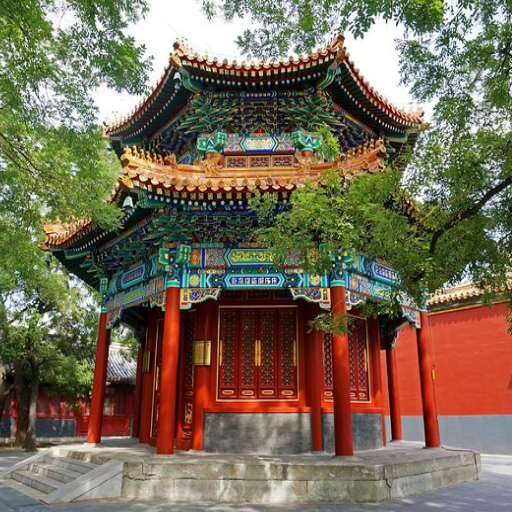
Benefits of a Beijing Private Tour
A private tour in Beijing offers unparalleled flexibility with personalization, allowing you to modify your schedule according to your interests and preferences. Unlike group tours, which follow a rigidly defined framework, private tours run on the traveler’s clock, making it possible to visit popular destinations such as the Great Wall, the Forbidden City, and the Summer Palace at one’s leisure. This choice is optimal for couples, families, or solo travelers seeking a more holistic experience.
Flexibility: Alter timelines and select different locations to address all paradigms that matter to you.
Tour Specifics: There are fewer private tour providers, so guides can pay closer attention and provide valuable information about the history and culture in the depth you desire.
Convenience: The transport is private, and most of the time, these are larger and more comfortable vehicles suitable for small groups or individual travelers.
More concretely, private tours generally cost between $100 and $300 per person, depending on what is included, such as a private car with an experienced driver-guide and ticket to the sites. These are a bit more expensive than group tours in a lesser price range, but for many travelers, the ease, comfort, and personalized experiences make them worth it.
Advantages of Group Tours for Social Travelers
Group tours help travelers who are looking to engage and get social interactivity. Joining a group tour allows you to meet and make friends with people from different cultures. These tours tend to have a well-defined schedule so that the essential points of interest in a destination can be attended to without making logistical arrangements.
Analyzing from a group tour perspective, the economy will be better in this option, with a range lying within $50-$150, depending on the time of the tour, inclusions, like a pro guide, transportation, number of people in a group, and other factors featured for consideration. For people looking for an economical trip, these tours are perfect for all budget travelers who wish to have a guided tour. Moreover, several entrance tickets and pre-arranged waiting privileges come with many group tours, saving time and convenience during the trip.
Combining the factors of social coherence and exploration as a community, group tours for people who appreciate cross-cultural interaction provide the best adjustable reward for cost, structure, and other relative experiences.
What Can You Expect from a Day Tour in Beijing?
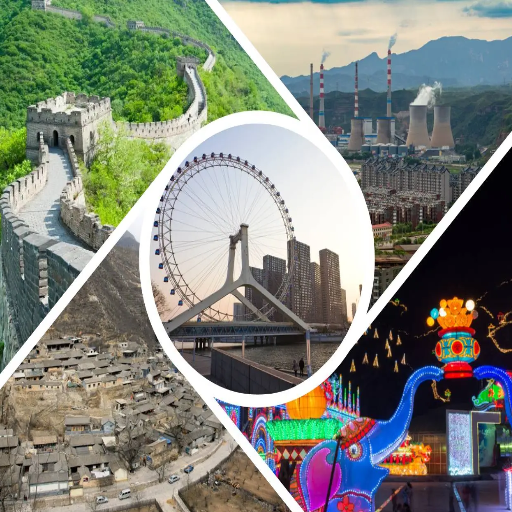
Highlights of a Mutianyu Great Wall Visit
According to my personal experience, the Mutianyu section of the Great Wall is a visit I will never forget, especially for the positive memories. Not only is this part of the wall Badaling area less crowded, but it is also equally famous for stunning architecture in contrast with the rest. It has a 2.5-kilometer stretch of wall with 22 towers that are surrounded by mesmerizing forests and mountains.
Mutianyu is straightforward to reach, as it is usually less than a two-hour drive. A cable car and a fun toboggan ride are excellent options for people who have issues walking long distances and want to conserve energy. The cable car has a six-person cabin, which is great because it operates even during peak times. Constructed to comply with the latest security regulations, the rocketing descent is risk-free, and all safety measures are guaranteed.
Wear your best walking shoes for futuristic tourist style, but remember that some parts of the wall are pretty steep and require a basic level of fitness to tackle. Based on your pace and personal feelings, most people will take 2-4 hours to stroll this fantastic feat.
Exploring Hutong Lanes and Local Culture
Every nook and cranny traversing the Hutong lanes was an experience waiting to be relished. It was rich in local history and culture, which spoke for itself. The lanes, narrower than old alleys and bordered by traditional Chow Tai houses, provide insight into the lifestyle of locals residing in the Beijing village. Most of these hutongs can be traveled on foot or sometimes on rented bicycles, which is eco-friendly and fun. People who prefer guided touring can also avail of rickshaw rides. However, they are limited to 2 people per journey, which aids in personal experience.
One of the highlights was the small shops, tea houses, and local eateries, where I relished the traditional snack varieties and saw craftspeople at work. This kind of traveling does not require excessive physical fitness, making it ideal for travelers of any age. The perfect time for this activity is 2-3 hours, allowing you to set your own pace. The immersion in cultures blended with the vibrant, dynamic atmosphere of the Hutongs left me with a better understanding and appreciation for local heritage.
Top Tips from a Travel Guide
Considered the best way to view the Hutongs: I suggest a stroll or renting a bike as the preferred method of exploring the Hutongs. Walking is a more relaxed way of appreciating the little details, while cycling is incredibly efficient and helps cover much ground. Either way is sustainable and allows you to take complete control of the rhythm of your trip. Remember that narrower roads and busy peak times may negate the suitability of bicycles during those times.
Guided Tours and Rickshaw Rides: When you want more structure in your trip, guided tours using rickshaws are very convenient. Each rickshaw is built to accommodate two passengers, enabling good comfort while riding. The guides ensure that you do not miss any critical aspects of history or culture, which is relaxing. However, you cannot choose how long you will stay in certain areas.
Time and Physical Fitness: Depending on the method you use for covering the area, it takes approximately 2-3 hours to explore the entire region. The best part is that you do not need to be incredibly fit to navigate the various Hutongs. It is for all ages, young or old, walking, cycling, or riding. Do you plan on walking or riding for a while? Wear comfortable clothing and shoes as you may find that you get warmer and warmer.
Before the Visit: Plan to dress appropriately depending on the season and the weather. Hutongs can get slippery during rain or snow. Bringing a small bag with water, sunscreen, and different maps (or offline-enabled mobile applications) can make the visit hassle-free. Furthermore, getting up early in the morning allows you to enjoy the charm of these historical lanes without crowds.
Customs and Immersion: Always remember to respect the local culture. Both residents who live near this area and tourists appreciate a no-shouting policy. Do not hesitate to spend time in the local restaurants and shops, interact with local artisans and shopkeepers, and enjoy the good food, which will surely increase your appreciation for the culture.
Following these pointers will make your visit to the Hutong informative, pleasant, and respectful of local culture and nature.
How to Plan Your 2025 China Tour with Beijing as a Highlight?
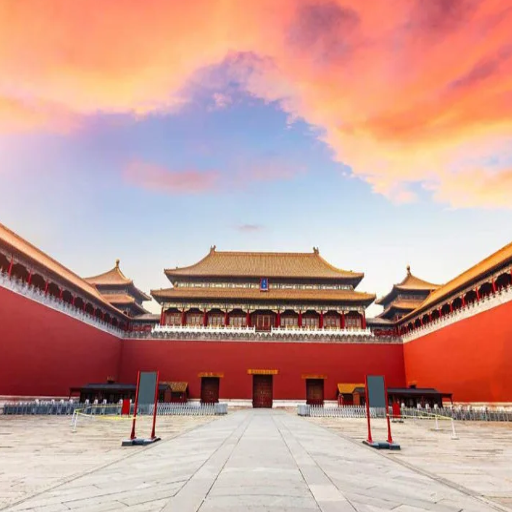
Creating the Perfect Beijing Travel Itinerary
As I plan to tour China in 2025, Beijing being the focal point, I will ensure that my itinerary is in synch with the text’s cultural and historical attributes. I usually spend at least 4 to 5 days in Beijing visiting its main points of interest, which include the Great Wall, Forbidden City, and the Summer Palace, and I have the chance to stroll through the Hutongs.
There are more comfortable temperature ranges in Spring (April-May) and autumn (September-October), so I try to plan my trips around those months. I will not have to face extreme summer heat or harsh winter cold during those times. These time frames allow me to make the best use of enhancing Beijing’s seasonal features, such as scenes of blooming flowers or fall foliage.
Purchasing a Beijing Transportation Smart Card (Yikatong) will allow me to easily access Shijingshan’s subway and bank my card while in the city. The card makes riding buses, subways, and even renting bikes accessible while spending less money during my visit. Important points to remember include understanding the subway’s working hours (6 AM to 11 PM) and considering the time it takes to arrive somewhere during peak travel times, preferably early or late.
While booking hotels, I will look for places near Tiananmen or Qianmen Street for easy access and convenience. By minimizing the distance to primary sites, either staying on metro line one or a short walk from the sites, less time is spent commuting, and more time can be enjoyed in the city.
Ultimately, I would plan my day with early starts and crowd control techniques. For example, when seeing the Great Wall, I would visit Mutianyu instead for a more enjoyable experience. By customizing and planning these critical details, I will ensure that my visit to Beijing is well-balanced and purposeful.
Incorporating Chengdu and the Pandas
In addition to its rich culture, Chengdu is best known for its panda sanctuaries, including the Chengdu Research Base of Giant Panda Breeding. I would prioritize visiting those pandas first. To get the most out of the experience, I’d make it a point to arrive at the base around 8-10 AM when the pandas are most active. Regarding placing, I would likely stay around the panda base or close to Line 3 on the metro since it spans key locations in Chengdu.
Getting around can be made easier with the Tianfu Tong card, which Chengdu offers as a substitute for the Yikatong from Beijing. With it, I could transfer between taxis, buses, and the metro, all conveniently with one card. Using the metro from around 6 AM to 11 PM aligns with my plan to make the most of my time in Chengdu. I would also have to consider travel time to avoid peak time congestion, similar to Beijing.
The plans integrate with my goals smoothly. With careful location choice and transport planning, I can start my day early and avoid additional delays, making my experience in Chengdu considerably more enjoyable, especially with the pandas.
Planning a Yangtze River Cruise Experience
In planning my Yangtze River cruise, I would first research the best itineraries encompassing my areas of interest, such as the Three Gorges region or cultural sites like the Fengdu Ghost City. My preferred travel time would be spring or fall since those two seasons have moderate temperatures, are not likely to have heavy rain, and are favorable for sightseeing and taking pictures.
I estimate the cruise would last between three and seven days, depending on the selected route. My cruise line of choice would be well known for using English-speaking guides, having large cabins, and providing food to passengers, as this caters to my personal preferences. From a planning perspective, I would need to make sure that the vessel’s dimensions and the ship’s systems could operate in different water levels so that the experience is not compromised during changes of seasons.
Finally, ensuring transportation is available before and after the cruise is important to the plan. I would check the connections to large metropolitan areas like Chongqing or Yichang, as they are known to be the main points of departure and arrival. Covering these aspects allows me to optimize and enjoy my cruise along the Yangtze River.
Frequently Asked Questions (FAQs)
Q: Which destination tour packages, including those in Beijing, are most popular?
A: The most widely purchased tour packages to China, including Beijing, usually involve multi-day tours of 7-10 days, combining Beijing with Xian, Shanghai, and sometimes Guilin. These often include the Great Wall, Forbidden City, Temple of Heaven, Summer Palace in Beijing, and the Terracotta Warriors in Xian. Prices vary between $800-$2000 for each individual depending on the duration, level of service, and whether the tour is a group tour package or a private tour. For 2025 tours, many operators apply 10-15% early booking discounts.
Q: How do best private tours differ from group tours in Beijing?
A: Unlike group tours, a private guide gives you a personalized experience, complete with an accompanying driver, the choice to customize your route and plans, and the flexibility to stop and rest whenever you choose. This experience does cost more (averaging $150-300 per day). However, it includes detail-rich alone time with the guide so that the client’s preferences can be fully catered to and booked accordingly. Group tours, which start at (approx) $60-120 a day, are more economical and foster interaction with fellow vacationers but tend to stick to the rigid time schedule. Most tourists agree that private tours are a better deal if traveling with family or small groups, while solo travelers tend to appreciate the affordable company of a guide. In addition, the best private tours let you customize your itinerary to include specialized features such as hiking at the less-crowded parts of the Great Wall.
Q: Is there a package that includes both Beijing and Xian and is also affordable?
A: Yes, a wide selection of budget-friendly packages for travel to China incorporate both Beijing and Xian, with prices generally falling between $600 and $1200 for a 6 to 8-day trip. East Asian travel packages typically cover transportation with a high-speed train between cities, lodging, the primary point of interest for both towns, and some food. In Beijing, expect to see the Great Wall, Forbidden City, and Summer Palace, while Xian is known for the Terracotta Warriors and Ancient City Wall. Economically friendly packages usually utilize 3-star hotels and contain small group tours, with moderately priced packages using 4-star hotels and occasionally providing private guides. To truly experience real China, try to find packages with local activities such as dumpling-making classes or excursions to hutongs.
Q: What Great Wall hiking options are available from Beijing?
A: Hiking within the Great Wall around Beijing caters to varying fitness levels, with the most sought-after sections being Jinshanling (3-4 moderate hours with lovely views), Simatai (challenging with steep sections, but excellent night views), and Mutianyu (easy with cable car options). Jiankou to Mutianyu is fantastic for experienced hikers wanting a wild wall experience. Most hiking tours offer a tour guide, transportation, entrance fee, and bottled water for potentially $80-200, depending on the section and if it’s private or group. It is now possible to avoid the more crowded sections, such as Badaling, and instead focus on the heavily undulated and less photographed parts of the wall, thanks to the many tour operators aiming to specialize in Great Wall hiking.
Q: What about traveling to Beijing with the best-rated tour guides?
A: Tours in Beijing rated with the best tour guides have a higher average cost, meaning they often have a higher cultural context and invaluable historical insight. The best guides in the industry speak fluent English and know history exceptionally well, all while being able to tailor these experiences to your needs. When booking a tour, realize the times and dates the company offers and ensure your guide is already credentialed for the tour. Supper guides can often grant unique access to various sites, change plans set in advance, and provide real, local experiences. A well-versed guide to popular Chinese destinations, including the well-known Forbidden City, goes a long way in having a satisfying trip. Prepare to spend from 120 to 200 dollars a day for a private driver and guide in Beijing’s tour services, while in smaller cities like Datong or Pingyao, the rates are slightly lower.
Q: What day trips from Beijing are worth considering?
A: Certain day excursions from Beijing that are particularly rewarding include Great Wall sections at Mutianyu, Badaling, or Jinshanling (depending on whether you prefer crowds or authenticity), Chengde Mountain Resort (former imperial summer retreat), Gubei Water Town (picturesque restored ancient town near Simatai Great Wall), and Tianjin (contemporary city reached by 30 min high-speed train). Per an organized tour with transportation, lunch, entrance fees, and other costs, each day’s trip costs range from $80 -150 per person. These trips are less common but very recommended, such as Eastern Qing Tombs and Datong (Buddhist cave temples), but these are further away and thus mean early mornings or overnight stays.
Q: Will there be specialized packages for 2025 tours in Beijing available?
A: Celebrating the 15th anniversary of the Olympics in 2008, operators are launching special packages for tours in 2025, including Beijing. These include newly created tour packages with Olympic sites and traditional ones, longer packages with emerging tourist cities like Zhangjiajie or Chengdu, and unique cultural tours with a focus on traditional crafts and performing arts. Many companies have crafted unique tours with exceptional cultural performances and access to historical locations not open to the general public. There is an early booking discount of 15-20% for packages to China for 2025, in which bookings must be made before the middle of 2024. Some operators are encouraging early bookings by offering no-fee postponement policies.
Q: How do you see beyond Beijing’s standard tourist attractions and experience “real China”?
A: For a more detailed approach to authentic local culture, find a tour that offers tai chi sessions in parks, meals served in family homes, stays at hutong neighborhoods, and less popular but equally stunning parts of the Great Wall such as Jinshanling or the wild wall at Jiankou. Consider adding authentic destinations such as the ancient walled city of Pingyao, the Yunnan province cities of Kunming and Lijiang, and rural towns outside of Beijing. A good travel consultant will help design the trips around these locations for a more authentic approach. Certain tourist companies designed special “Beyond the Icons” packages that surpass site checking and major landmark immersions. These packages are a bit pricier, averaging 20-30 percent more than the standard tours, but offer a greater understanding of the local culture. Some ethnocentric tour operators compose packages that offer tourists a richer understanding of the area’s culture and charge around 20 to 30 percent more than regular tours.
Q: What vacation packages combine Beijing with southwestern destinations like Yunnan?
A: There are numerous vacation packages combining Beijing’s imperial splendor with the cultural and scenic treasures of Yunnan province. These 10-14 day tours, which start in Beijing, typically last from 3-4 days, where the Great Wall, Forbidden City, and other highlights of the region are provided. These tours continue towards Kunming, often called the “City of Eternal Spring.” From there, Lijiang, a UNESCO World Heritage old town, Tiger Leaping Gorge, and sometimes Shangri-La. For these all-inclusive packages, costs are approximately $1,800-3,000, depending on the quality of accommodation and the number of people in the group. Although most travelers undertake these tours for leisure and enjoyment, this split between Yunnan minority cultures alongside Northern imperial history helps to understand the complete picture of China’s multifaceted nature. Most tours include high-speed train or domestic flights between destinations and private guides in each location.